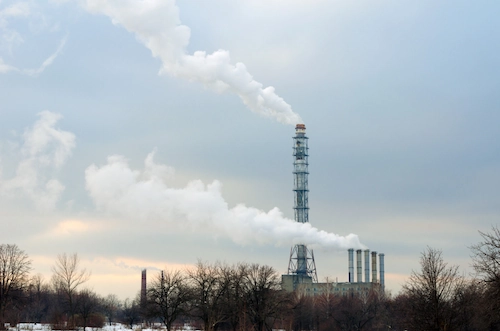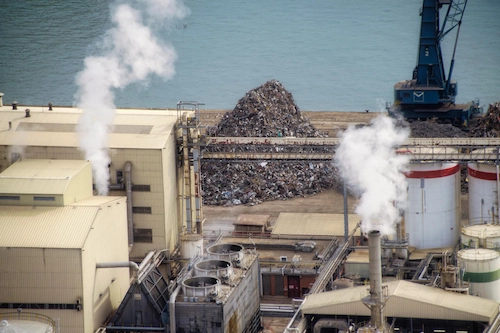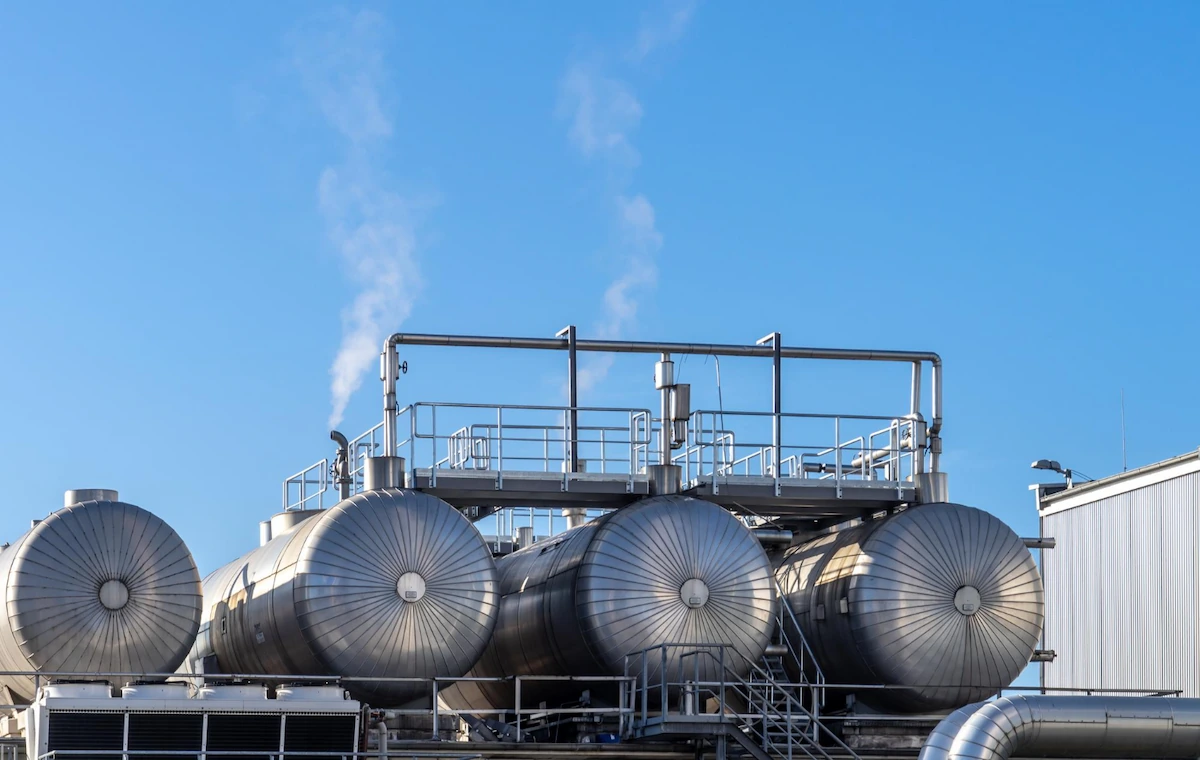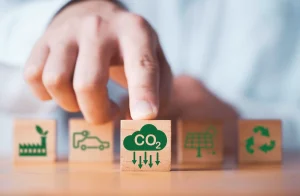Table of Contents
Methane gas is often associated with the global warming issue. Among all the greenhouse gases produced by daily human activities, methane is the second-largest emission after carbon dioxide.
Although it is a greenhouse gas emission, methane can also be used as an energy source. Are you curious to know more about this gas? Check out the full article below!
What Is Methane Gas?

Methane gas is one of the simplest hydrocarbon compounds. It is odorless, colorless, and highly flammable. It consists of four hydrogen atoms and one carbon atom.
Methane gas can be produced naturally, such as in water bodies, due to the presence of methanogenic microbes (microbes that degrade organic matter in oxygen-free or anaerobic conditions) and through the fermentation of animal waste.
In addition to being produced through natural processes, methane gas can also be formed as a result of human daily activities, such as vehicle exhaust, industrial waste, and the decomposition of waste at landfills.
Read also: Differences between Waste and Garbage, Don’t Misunderstand!
Benefits of Methane Gas
Methane gas is one of the alternative fuels that can be used in addition to coal and petroleum. In Indonesia, the use of methane gas is crucial for supporting power plants and industrial activities. Some of the benefits of methane gas are:
1. Power Plants
One of the main benefits of methane gas is as an alternative power plant source to coal. In gas-fired power plants (PLTG), methane gas is burned to drive turbines that generate electricity.
2. Household Heating
In countries with cold winters, methane gas is often used to heat rooms and fireplaces. The use of methane gas for fireplaces is considered to produce lower emissions than wood or coal briquettes.
3. Chemical Production
Methane gas is one of the most important basic compounds in the chemical manufacturing industry. It can be processed to produce various derivative products, including chemical compounds such as methanol, hydrochloric acid, and chloroform.
4. Industrial Processes
Several industrial sectors, such as food, textiles, paper, cement, glass, ceramics, and petrochemicals, typically require methane gas for their production processes. Methane gas is needed to operate heating equipment such as steam boilers, autoclaves, burners, gas turbines, or drying machines.
Read also: What Is Electronic Waste and What are the Impacts on Nature?
Where Does Methane Gas Come From?

Methane gas has many benefits for various sectors, but it is also one of the greenhouse gas emissions that might harm the environment. According to the U.S. Environmental Protection Agency (U.S. EPA), methane emissions are estimated to increase by 20% by 2030, totaling 8,522 MMTCO2e.
This gas can be released from several activities that cause greenhouse gas effects:
1. Oil and Gas Production Activities
The fuel you use every day actually goes through a long process, including extraction, combustion, mining, and processing, to become a finished product. This production process releases methane gas emissions into the air.
2. Wetlands
Have you ever heard of wetlands? Wetlands are areas where land meets water, either permanently or seasonally, such as lakes, swamps, rivers, or floodplains.
Wetlands are optimal for the growth of methanogenic microorganisms that produce methane. Approximately 30% of the total methane emissions worldwide originate from wetlands.
3. Animal Farming
One of the main emissions from the livestock industry is methane gas, particularly from ruminants like goats, sheep, and cows. Animals release methane gas through breathing, feces, and belching after enteric fermentation occurs in their bodies.
4. Industrial Waste
Some industrial sectors, such as food processing and textiles, can produce solid and liquid waste that can undergo anaerobic fermentation if not properly treated. This fermentation can release methane gas into the environment.
5. Decomposition of Organic Waste
Methane gas is one of the components produced by the decomposition of organic waste. Some types of waste, such as paper, food scraps, and leaves that end up in landfills, can be broken down by microbes to produce methane gas.
Read also: Simple Ways to Improve Air Quality
Negative Impacts of Methane Gas
Methane gas has a warming capacity 80 times greater than carbon dioxide, meaning that even in smaller quantities, methane gas is far more effective at trapping heat and causing temperature increases. Some of the effects of methane gas on the environment are:
1. Triggering Explosions
Methane gas is a highly flammable active material that can cause explosions. In large quantities, when exposed to oxygen, methane can become a highly reactive compound.
In some locations, such as coal mines, methane gas accumulations can cause explosions if exposed to spark, electrical equipment, or mechanical friction.
2. Global Warming
Methane gas is one of the greenhouse gases that can create a layer in the Earth’s atmosphere. This layer of methane gas can absorb heat from the sun and cause an increase in the Earth’s temperature.
3. Health Issues
The burning process that uses methane gas can produce hydrocarbon compounds and smoke that are dangerous if inhaled. In addition, large amounts of methane gas can cause various health issues such as headaches, nausea, vomiting, and fatigue.
4. Climate Change
Furthermore, the effect of methane gas in the atmosphere can also influence the Earth’s temperature, which ultimately impacts climate change. Some effects of climate change include extreme weather, rising sea levels, and melting ice at the poles.
That is a complete explanation about what methane gas is, including its benefits and impact on the environment. Although methane is one of the greenhouse gases that contribute to global warming, this gas can still be reused as an alternative energy source.
Are you a young generation concerned about the environment? Want to increase positive activities while taking care of the earth? Let’s join Indonesia Asri.
You can participate in exciting and beneficial programs, like #AksiAsri, where you will be invited to adopt an eco-friendly and sustainable lifestyle. What are you waiting for? Let’s register yourself now and become a Warga Asri to create a healthy planet!
Read also: 3 Simple Steps to Combat Climate Change
FAQ About Methane Gas
1. What is methane gas?
Methane (CH₄) is a colorless, odorless, and highly flammable greenhouse gas that is the main component of natural gas. It is produced naturally and through human activities.
2. Where does methane gas come from?
Methane comes from natural sources such as wetlands, termites, and oceans, as well as human activities like agriculture (especially livestock), landfills, and the oil and gas industry.
3. Why is methane considered harmful to the environment?
Methane is a powerful greenhouse gas that traps heat in the atmosphere. Over a 20-year period, it is more than 80 times more effective at warming the Earth compared to carbon dioxide.
4. Is methane gas dangerous to humans?
Yes, in high concentrations methane can displace oxygen in the air, causing suffocation. It is also highly flammable and poses explosion risks in enclosed spaces.
5. How is methane gas used?
Methane is widely used as a fuel for heating, electricity generation, and as a raw material in the chemical industry to produce products like hydrogen, methanol, and fertilizers.









